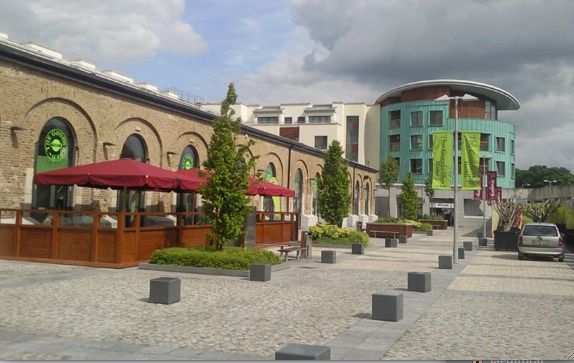Eight years ago, builders of a new shopping complex at MacDonagh Junction in the new city quarter of Kilkenny, uncovered human remains on grounds that once housed the Kilkenny Union Workhouse.
A year later, a full excavation was carried out, concurrent with construction, by Brendan O’Meara of Margaret Gowen & Co. Ltd, a private archeological consulting firm, and the scale of the initial discovery was realized – 63 burial sites and no less than 970 skeletons dating to famine times. It is the largest mass burial site ever unearthed in Ireland.
Since the discovery, Jonny Geber, a paleo-pathologist at Queens University Belfast, has been leading a team of researchers to determine “how the calamity struck the lowest levels of society and what the conditions in the workhouse were like.” His research and conclusions were featured in the May 2013 issue of Current Archeology.
Workhouses were introduced to Ireland by the British government in 1838 as the most cost effective way of taking care of the poor and the destitute. It became incumbent on the landowners in the district to pay the costs of the upkeep of the workhouse.
During the worst years the famine, workhouses in Ireland swelled far beyond capacity, with dire results.
The Kilkenny Union Work-house was designed to hold a maximum of 1,300. In July 1847, 2,340 people were confined there. By 1851, that number had risen to 4,357.
Evidence gathered by Geber and his team shows that when an outbreak of typhus hit the workhouse in 1847, mass burial sites were created over a 43-month period, between 1847 and 1851.
Moreover, Geber found that over half of the remains found were of children.
Of the 970 skeletons recovered, 499 showed signs of scurvy, caused by a lack of Vitamin C in the diet, implicating the disease as a greater influence on mortality than previously thought.
Potatoes were the exclusive source of Vitamin C for the Irish pesantry, with the average adult eating 12-14 lbs of potatoes per day prior to the destruction of the crop due to blight in successive years, beginning in 1845.
Geber’s findings suggest that pre-existing conditions that were improperly diagnosed or impossible to treat at the time (given 19th-century medical knowledge) were the main cause of death. For example, many of the bones unearthed show that sources of Vitamin C had been re-introduced into the inmates’ diets after a period of deprivation, indicating that advanced scurvy was already present prior to their entering the workhouse, and that once inside, the poor received at least some relief from malnutrition. Even so, Geber’s research points to the extreme conditions of poverty and substandard care under which the workhouse inmates were forced to live during the famine years.
In May 2010, the remains were re-interred in a nearby cemetery and a famine memorial garden was officially consecrated.
MacDonagh Junction, combining a mix of high quality retail, residential, business and leisure developments, now sits on the site of the former Kilkenny workhouse. Many of the original buildings were preserved.


Leave a Reply